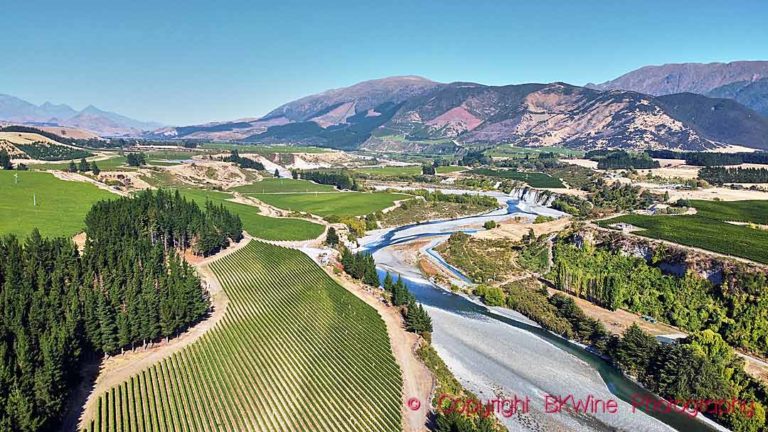New Zealand, the country that is as far away from Sweden (and the rest of Europe) as you can get on this earth – what can they offer in terms of wine? A visit by some 20 New Zealand producers in Sweden gave an opportunity to find the answer. BKWine’s reporter Carl-Erik Kanne was there to report.
If one were to try to single out some conclusions from this event it would probably be
- Most winemakers talk about sustainability in their operations
- “New” grapes show up in New Zealand
- Many of the producers were small family business with very dedicated employees / contractors
To understand the conditions for wine production in New Zealand, you may want to take a look at the New Zealand geography.
North is south and South is north
As the reader will know, the country consists of two large islands, North Island and South Island. Since we are in the Southern Hemisphere, it means that the hottest part is on the North Island about 36 degrees south with subtropical climate, and the coolest part is at the southern tip of the mountainous South Island, about 46 degrees south. Compared with the northern hemisphere it corresponds roughly to the area between southern Italy and southern Germany within which spans also the majority of Europe’s vineyards are.
The different climatic conditions provide a environment for growing many different types of grapes.
The day also showed examples of many exciting wines and not just those made of sauvignon blanc and pinot noir (the traditional “staple” products). As for whites there were chardonnay, riesling, pinot gris and gewurztraminer, and reds were both merlot, cabernet sauvignon and syrah. For the latter, the grape name that they use is typically the French name “syrah” (rather than “shiraz”). Maybe this is to indicate that the taste is closer to the origin in the Rhone Valley.
Many also experiment with other grapes such as viognier, semillon, malbec, tempranillo and montepulciano (sangiovese).
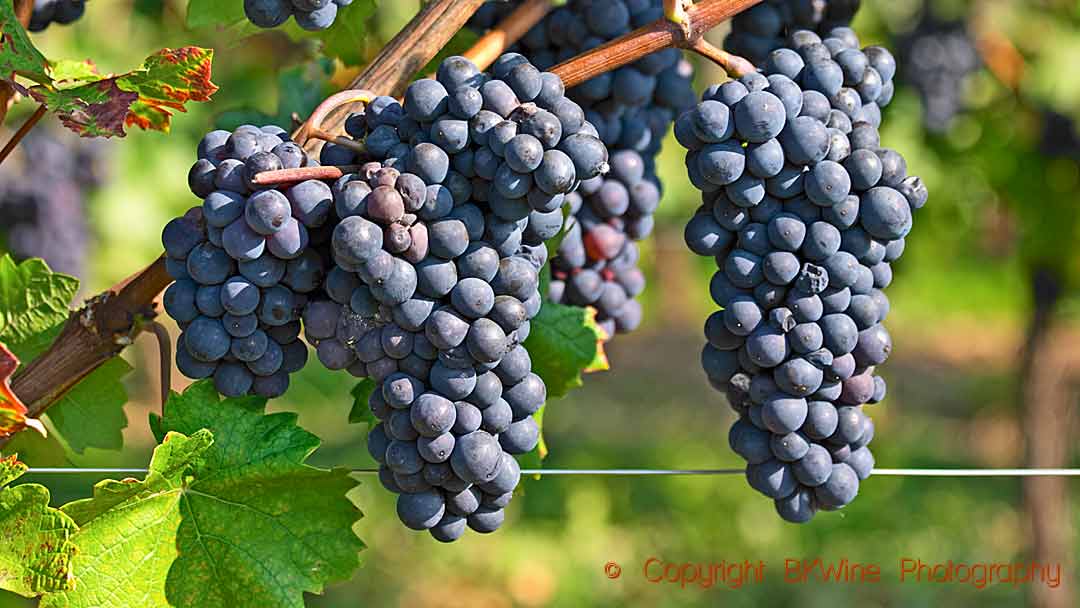
As one would suspect the majority of the plantings of the grapes that require more heat, ie merlot, cabernet sauvignon and syrah, can be found on the North Island with its 5 regions, where Northland is warmest and Wairapa is the coolest.
Interesting in this context is that Chardonnay is grown as far south as Cenral Otago, the coolest region, while Pinot Noir is concentrated on the southernmost part of the North Island and in all regions of the South Island. Sauvignon Blanc can be found everywhere except in the warmest part in the north.
And the wines?
So how did then the wines taste?
Among the producers were two that stood out in particular, namely, Schubert and Seresin Estate. These two were characterized by very high quality of all the wines, usually cool climate style, elegant and well structured.
The style reminded me more often of Europe than of the New World.
Seresin Estate
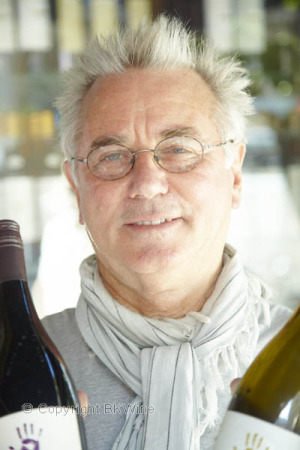
Seresin Estate was founded in 1992 by Michael Seresin, is biodynamic, and certified by Demeter.
Michael Seresin is a cinematographer who was attracted on his travels to Italy for growing quality wines and subsequently bought the Home Vineyard in Wairau. For the prestige wines they use grapes from the Home, Tatou and Raupo Creek vineyards.
From Seresin I particularly liked:
Leah Pinot Noir 2011, which is made from selected Dijon clones from all three vineyards. The grapes are hand harvested, sorted by hand, destemmed and fermented with natural yeasts and aged 11 months in French barriques of which 20% are new. No fining or filtration.
Well made, elegant wine with good structure and a long finish. Can be kept for several years.
Raupo Creek Pinot Noir 2010. Dijon Clones from the Raupo Creek vineyard. Long skin contact during maceration and fermentation with natural yeasts. 18 months aging in French barriques, 30% new. No fining or filtration.
A full-bodied and really good Pinot Noir from clay soil in the Omaka Valley
Schubert Wines
Schubert Wines was founded in 1998 by Kai Schubert and Marion Deimling, both with a winemaking degree from the University of Geisenheim. After working in vineyards in Europe, USA and South America they realized the dream of owning a vineyard with their favourite grape Pinot Noir on New Zealand’s Nort Island in the Wairarapa Valley. 12 hectares of estate’s 40 hectares are planted with grapes, mostly Pinot Noir of eight selected clones.
From Schubert I primarily liked the following wines:
Pinot Noir Block B, Wellington Wairarapa, is made from 5 different Dijon clones and fermented with natural yeasts in steel tanks and then aged for 18 months in French barriques half of them new.
Spicy aromas of dark red fruit, hints of oak, in the mouth a good acidity, clean fruit and spicy notes. An elegant wine to drink with a pheasant.
Schubert Estate Pinot Noir 2012. After destemming fermented slowly in steel tanks and then aged for 18 months in French barriques. Good structure and nice balance acidity / fruit.
Man O’War
Man O’War made wines more in the New World-style with plenty of fruit and power. Good wines if you like the style. I preferred the Man O’War Cabernet Franc Merlot which was a blend of merlot and cabernet franc, with some malbec, syrah and petit verdot; grapes from 18 different plots, most fermented with natural yeast in steel tanks and with malolactic fermentation in old barrels.
Really delicious was the Man O’War Warspite 2012 which was a blend of cabernet franc, merlot and malbec.
Man O’War is located on the island of Waiheke, which is not far from Auckland on the North Island.
Te Mata Estate
A really good Bordeaux blend at Te Mata Estate that is New Zealand’s oldest wine producer, founded in 1896.
The wine in question was called Coleraine 2009 and is a blend of 52% Cabernet Sauvignon, 43% Merlot and 5% Cabernet Franc. The different grape were fermented separately in relatively high temperature, with long skin contact. Then aged 20 months in new French barriques, about half of the time separately and then blended (assemblé) and subsequent clarification and additional ageing.
The wine was dark ruby red, aromas of blackcurrant and a palate with good acidity, pure fruit of dark berries and soft tannins. A well-structured wine with a long finish that is enjoyable now, but can be aged 5-10 years.
Foley Family Wines
Foley Family Wines of Martinborough, at the end of the North Island has a whole range of wines from different vineyards with different characteristics.
Dashwood Sauvignon Blanc and Dashwood Pinot Noir, both Marlborough and 2013 were well-made wines with fine acidity and minerality and fine structure in the case of the pinot noir.
Foley also showed a Runholder Pinot Noir Martinborough 2013, with good acidity / fruit balance and fine tannins. Good with poultry and other birds.
For the other wines that I can recommend I have grouped them under the main grape varieties specifying the producer, region and year.
Riesling
Pegasus Bay Riesling Waipara Valley 2007
Mature Rieslings with typical petroleum nose, semi-dry, pure fruit, good balance acidity / sweetness, good length. Nice food wine to Asian cooking and to Sushi.
Felton Road Dry Riesling, Central Otago (Bannockburn) 2013
Clean fresh nose, yellow apples. Good acidity and clean fruit. Soft fine taste.
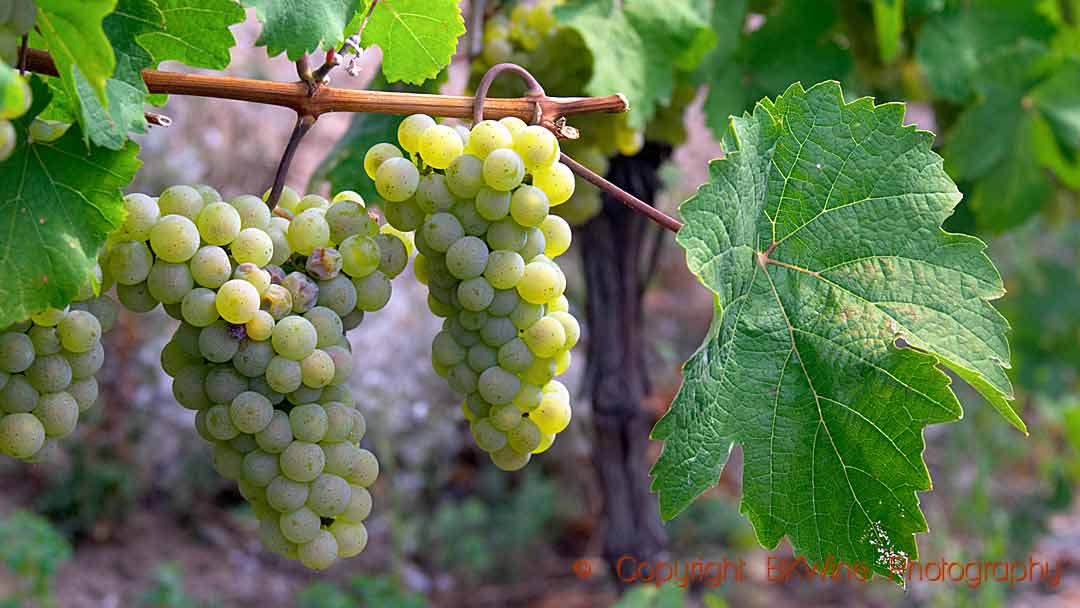
Pinot Gris
Momo Pinot Gris Seresin Estate, Marlborough 2013
Good balance acidity / sweetness (10 mg residual sugar), fine minerality.
Yealands Estate Aromatic Blend Marlborough 2014 (Awatare Valley)
Blend of pinot gris, Riesling and Gewurztraminer in proportions of 49% / 32% / 19%.
Hand-picked grapes, cool fermentation. Soft fruit, well balanced.
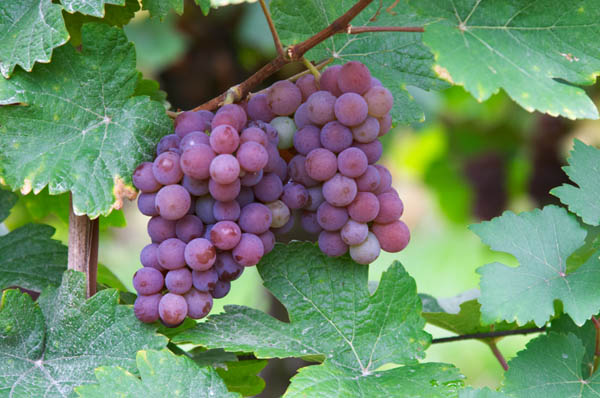
Grüner veltliner
Saint Clair Pioneer Block 5 Bull Block Gruner Veltliner 2013, Marlborough
Medium acidity, pure fruit with notes of pears, good finish.
Sauvignon blanc
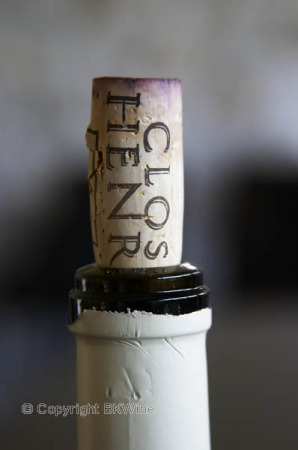
Spy Valley Sauvignon Envoy Blanc2012, Marlborough
Mineral on the nose, rounded acidity thanks to oak aging. Grilled’s seafood.
Petit Clos by Henri Sauvignon Blanc 2013, Marlborough Wairau Valley
French producer (Henri Bourgeois in Sancerre), young vines, gooseberry fruit, fine acidity, balanced.
The Crossings Sauvignon Blanc 2013, Marlborough, Awatere Valley
Cuvée from three different vineyards, cool fermentation, aged in stainless steel tanks.
Nose typical for the variety with some spiciness, clean fruit and a long finish.
Chardonnay
Kumeu River Hunting Hill Chardonnay2011, Auckland
Lovely Chardonnay with minerals and good balance between oak and fruit. Long aftertaste.
Te Mata Estate Chardonay Hawkes Bay 2013
Yellow fruits, buttery aroma, fruit with hints of oak. For fish with stronger flavour.
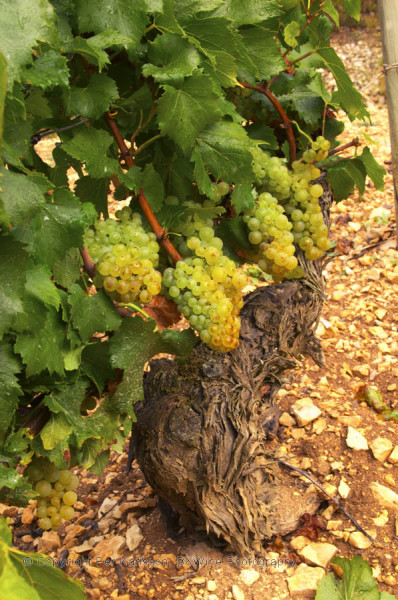
Cabernet Franc
Crossroads Winemakers Collection Cabernet Franc Hawkes Bay
Aged 12 months in oak barrels. Generous ripe fruit. Good length.
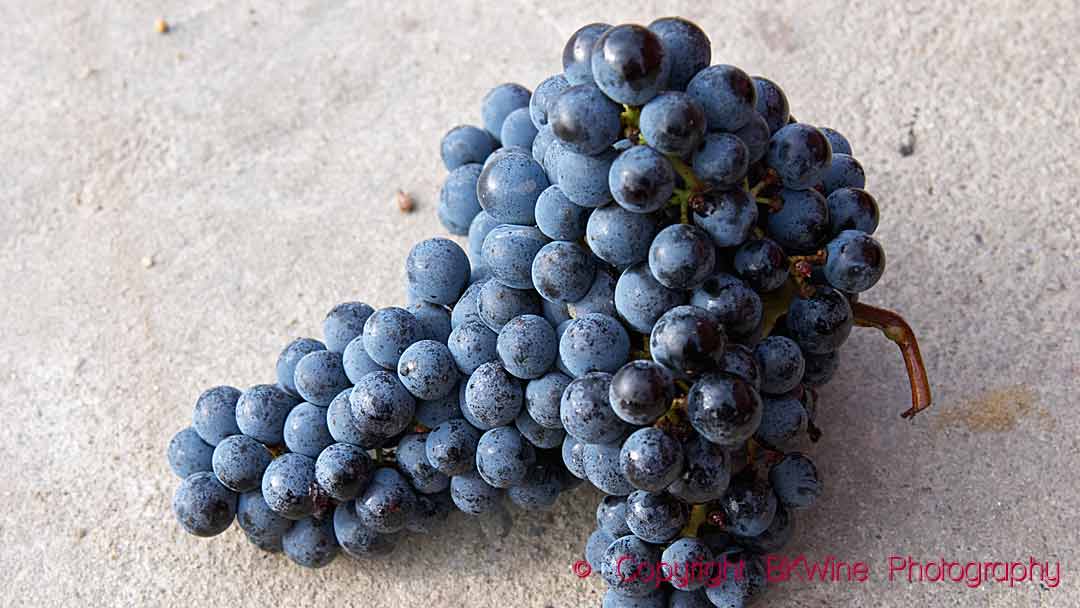
Merlot / Cabernet Sauvignon
Oyster Bay Merlot Hawkes Bay 2013
Well structured merlot.
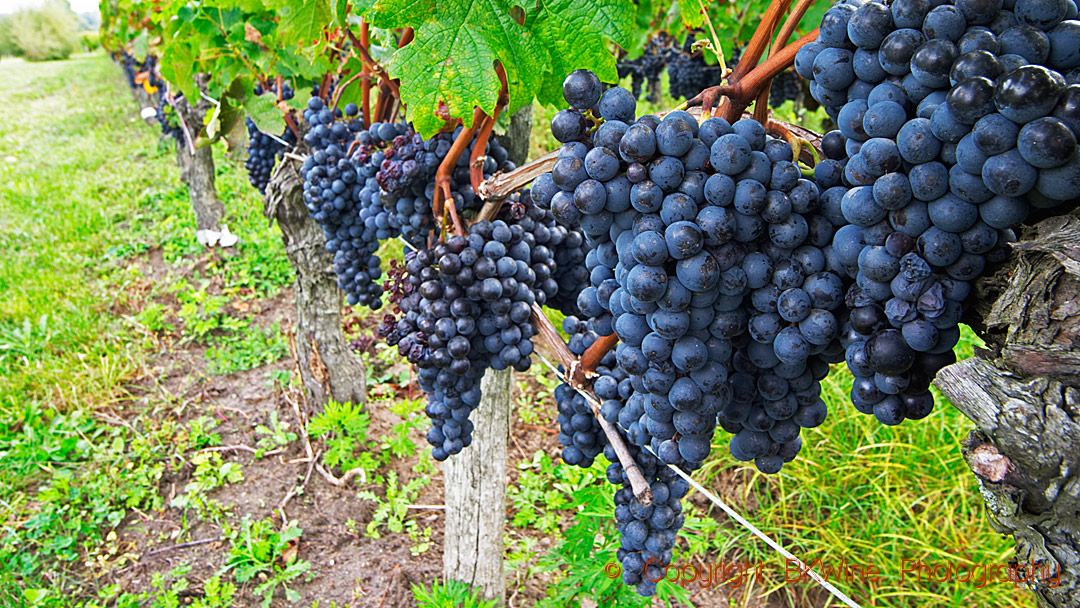
Syrah
Seifried Syrah Nelson 2010
Clean and generous fruit.
Saint Clair Pioneer Block 17 Plateau Hawkes Bay Syrah 2013
Lovely syrah!
Pinot Noir
Saint Clair Pioneer Block 15 Pinot Noir 2010, Marlborough
Full-bodied pinot noir for the autumn’s finer game birds.
Martinborough Vineyard Pinot Noir 2010
Good food wine. Also a full-bodied pinot noir for the autumn’s finer birds.
The tasting of the New Zealand wines were arranged by the Nordic Wine Institute in cooperation with New Zealand Wine.
Carl-Erik Kanne is a long time wine enthusiast and fervent wine taster. He reports from wine tastings and wine events in Stockholm for BKWine Magazine.


